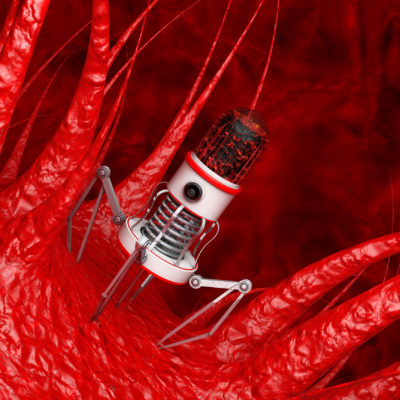For a lot of patients and gastroenterologists worldwide, the Pillcam colonoscopy is wonderful news. Perhaps you are already familiar with the Pillcam. You may have laughed it off, believing this to be some sort of science fiction medical scenario. No, it is real and available right now.
It is true that a small camera that you can take like a large vitamin is known by the term “pillcam.” As the name suggests, it takes shots as it moves through your colon. It’s also true that you don’t have to get that camera back after its trip. It’s a disposable camera. As a result, your doctor can now download images that were previously only available through an endoscope.
A tiny colonoscopy camera in a pill?
“This is a great diagnostic test,” said our own DDC Orlando, Dr. Sanjay Reddy. That is the good news. The bad news is that you may have thought incorrectly about this test. “A regular, comprehensive colonoscopy cannot be replaced with it. If you have a condition like Crohn’s disease, it is better to have it done just after a colonoscopy or as a follow-up colonoscopy.”
Swallowing a Colonoscopy:

Patients who dislike the standard colonoscopy tests would, of course, love this kind of test. The notion of consuming a huge capsule pill rather than undergoing a standard colonoscopy sounds quite appealing. But, as we already mentioned, for a number of reasons, it is not actually how doctors use this technology:
Firstly, “the images of the colon are irregular and not continuous,” as stated by Dr. Reddy of Digestive Disease Consultants. “Therefore, there is less detail in the images than we would prefer.”
Secondly, as we have mentioned in other blogs, the conventional colonoscopy now provides us with more immediate treatment choices for hemorrhage control, polyp removal, and ablation. “Even with the advancements in pillcam technology, treating visible colon issues still requires returning into the colon. Therefore, the patient will have to come back for a conventional colonoscopy.”
The Pillcam and You: A Little Backstory and A Little Prediction on Pillcams
Since its introduction in 2000, capsule endoscopy, or CE, has made significant advances in the diagnosis of both upper and lower gastrointestinal disorders and concerns. A reliable method of diagnosing gastroduodenal pathology remains unclear, however the remarkable esophageal CE may be utilized to treat “esophagitis, Barrett’s esophagus, and varices. It also lacks the ability to do biopsies.

This is still a relatively new medical test, having been introduced 13 years ago. DDC believes that medical research scientists will conduct numerous more research. Eventually, pillcams may be able to correct what they observe and navigate around the digestive tract on their own.
In the coming years, research might reveal “the possibility of controlling capsule movement and developing capsules that allow tissue sampling and therapy administration.”
Pillcams Bring New Hope for Better Testing in the Upper GI Track.
In 2008, medical researchers unveiled the PillCam Eso 2. It was expressly created to enhance upper gastrointestinal tract diagnosis.
Although we will discuss the small bowel Pillcam in this post, we want to underline that we are now seeing positive results from the esophageal Pillcam, a new member of the Pillcam team.
With a camera on both ends, this pill capsule is definitely a step up from the first one. It’s designed to meet needs in the upper GI track.
This pillcam is also designed to be fast. It delivers graphics at a rate of 14 frames per second as opposed to 2. It naturally displays bi-directional pictures as well. As a result, the natural “rapid transit through the esophagus” is overcome by the high-speed double camera.
Check Out the Pillcam 2: Built for the Upper GI Track, Born to Explore the Esophagus
Experts say, “PillCam Eso 2 has a reported sensitivity of up to 80% for diagnosing reflux esophagitis and up to 100% for Barrett’s esophagus compared to conventional endoscopy.” Again, it should be highlighted that while patients seem to handle the treatment rather well, there is very little visibility. Likewise, biopsies are not available to us.

Compared to conventional endoscopy, screening for varices appears to be a more viable indication, with a reported sensitivity of 83% in a recent meta-analysis. The detection of varices with CE (capsule endoscopy) enables informed decisions on surveillance and primary bleeding prophylaxis…” Esophageal CE “has a favorable patient tolerability profile,” according to another statement.
Preparation Still Required For Pillcam
Patients must, however, prepare for a Pillcam endoscopy or colonoscopy with the same amount of unpleasant and precise intestinal cleansing as they would for a traditional operation.
Although the Pillcam performs best in cases of small bowel issues or bleeding that cannot be located by conventional endoscopy, the esophageal capsule is gaining popularity, evidently for diagnosing problems in the esophagus.
The esophageal Pillcam2’s dual camera and quicker pace aren’t the only features we like.
Other notable qualities of this esophageal explorer include:
- With a broader field of vision, your Digestive Disease Consultants can now see 169 degrees as opposed to 156.
- Improved optical technology. For such a tiny object, it boasts three lenses.
- The Pillcam 2 is well-suited to handle the extremely brief period of esophageal transit thanks to its 30-minute battery life.
- It is also a good way to reveal the inner workings of a patient’s esophageal-gastric junction. This is the epicenter of esophageal pathology, as we have mentioned in earlier blogs.
- Like the Pillcam for the small bowel, it performs its function for 30 minutes before shutting down and passing through the colon via peristalsis. Eventually, it is eliminated naturally.
The majority of patients who currently utilize pillcams, regardless of form, are those who have very low endoscopic tolerance. By this, we mean to identify those individuals who have conditions that raise the possibility of repeat endoscopy. As noted before, this test is excellent for follow-ups for individuals who require ongoing monitoring.
The Stars of the Pillcam System: 3 PARTS
The Pillcam system is considerably more than just the three readily available cameras that are small enough to fit within PillCam, despite this fact.
Part 1: The Recorder
The recorder can communicate with the capsule you swallowed from outside your body in an unusual way. The camera device tells the recorder about its amazing journey as it passes through the digestive tract. You, the patient, will wear this gadget around your waist in a little pouch that is fastened to the sensor belt. Your doctor can then review the data that was downloaded from the Pillcam.
Part Two: The Sensor Belt
This is the fancy word for a belt that you can wear around your waist that fastens easily. The belt has sensors built into it, as the name suggests. These sensors are patient-friendly; you won’t be hindered by adhesive or pinching attachments.
Part 3: The Viewer in Real Time
Your doctor or technician may easily watch the Pillcam procedure with the small, handheld, real-time viewer that comes with special software pre-installed. The PillCam operation is done by the RAPID Real-time viewer. The entire RAPID Reader software is also included in the portable device.
Now you know everything there is to know about the wonderful Pilcam technology’s full system. DDC Orlando will keep you updated on the latest technology advancements, including what constitutes science fiction and what lies ahead for patients in the field of gastroenterology.
